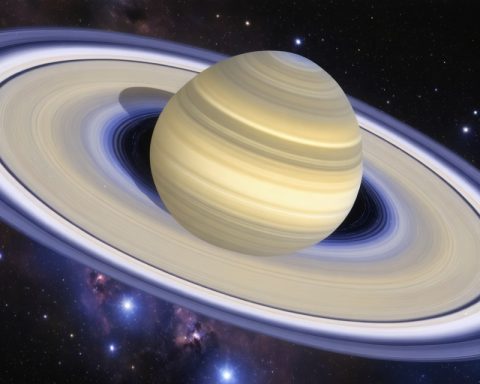- The Winter Hexagon is a captivating celestial formation visible in the winter night sky, formed by six of the brightest stars.
- This stellar pattern’s primary anchor is Sirius, the brightest star viewable from Earth, positioned in the constellation Canis Major.
- The hexagon includes Capella in Auriga, Rigel in Orion, Procyon in Canis Minor, Aldebaran in Taurus, and Betelgeuse, Orion’s red supergiant.
- Viewing the Winter Hexagon requires no special equipment, offering a chance to engage with the universe using only the naked eye.
- The Winter Hexagon serves as a celestial guide, providing a reminder of the beauty and wonder inherent in the night sky.
- This formation is both an educational experience for astronomers and a source of awe for anyone who appreciates natural beauty.
Gazing upward on a crisp winter night, the sky whispers its secrets through a celestial dance that few take the time to notice. As the cold air sharpens your senses, a powerful geometric marvel emerges from the cosmic canvas above — the Winter Hexagon. This dazzling formation, more magnificent than any earthly piece of art, connects six of the brightest stars to create a heavenly spectacle.
Imagine standing beneath the vast dome of the universe, the frosty air tingling on your skin, and above you unfolds an ancient work of art. Anchored by Sirius— the brightest star visible from Earth—the Winter Hexagon captivates with its sheer brilliance. Sirius, a beacon twinkling in the constellation Canis Major, serves as the glamorous starting point for this brilliant circuit.
Across the expanse of space, Capella looms in Auriga, drawing a line with Rigel’s steely glow in Orion, forming another cornerstone of this celestial structure. Rigel’s gleam illuminates Orion’s foot, adding an unmatched luminescence to the formation. Between these stellar gems, Procyon, shining serenely in Canis Minor, links to Aldebaran in Taurus, pooling their radiant energies with Betelgeuse, Orion’s mesmerizing red supergiant, to complete this cosmic hexagon.
What makes the Winter Hexagon not just a sight, but an experience, is its accessibility. No telescope or specialized equipment is required to appreciate its splendor—just your eyes and a clear night. It’s an invitation from the universe to pause, look up, and be engulfed by the wonder and mystery of the night sky.
The Winter Hexagon, with its storied past guiding sailors and thrilling stargazers, extends a timeless message. In a world filled with noise, sometimes pure, unadulterated wonder is your soul’s hunger. Stepping outside during the winter months, take a moment to connect with this heavenly design, chart its stars, and feel a part of something greater, grounded yet soaring.
As you stand under the vast expanse, remember this: the night sky is not just for those who understand the science behind it, but for everyone who cherishes the beauty it offers. Embrace it, learn from it, and let the stars ignite a spark of curiosity within you. The Winter Hexagon is not just a pattern of stars; it’s a reminder of the endless wonders waiting to be discovered, simply by looking up.
Unlocking the Secrets of the Winter Hexagon: A Celestial Spectacle You Need to See
Introduction
The Winter Hexagon is a dazzling formation of stars that offers both seasoned astronomers and casual stargazers a chance to connect with the universe in a deeply meaningful way. Anchored by some of the brightest stars visible from Earth, this celestial phenomenon creates a geometric marvel that is not only beautiful but also accessible to everyone, requiring no special equipment other than the naked eye.
The Stars of the Winter Hexagon
The Winter Hexagon comprises six prominent stars, each residing in a different constellation. Here’s what you need to know about these celestial giants:
1. Sirius: Located in the constellation Canis Major, Sirius is the brightest star in our night sky. Often called the “Dog Star,” it has been a key navigation point for sailors and explorers throughout history.
2. Rigel: A part of Orion, Rigel shines with a blue-white hue. As a massive star nearing the end of its life, it offers researchers insights into stellar evolution.
3. Aldebaran: Found in Taurus, Aldebaran is a red giant star that adds a splash of warm color to the hexagon. It is often associated with the eye of the bull in its constellation.
4. Capella: Anchoring Auriga, Capella is actually a complex multi-star system that appears as a bright single point of light from Earth.
5. Procyon: In the constellation Canis Minor, Procyon is part of a binary star system. Its proximity to Earth makes it one of the closest bright stars to us.
6. Betelgeuse: Known for its distinctive red hue, Betelgeuse is a red supergiant in Orion. As it nears the end of its life, it has fascinated astronomers with its potential to supernova.
How to Spot the Winter Hexagon
– Timing: The Winter Hexagon is best viewed during the late autumn and winter months when these stars are positionally optimal in the night sky.
– Location: What sets the Winter Hexagon apart is its visibility from virtually anywhere on Earth (in the northern hemisphere), provided you have an unobstructed view of the night sky.
– Technique: Start by locating Sirius, the brightest star, a great point to start your celestial navigation. Use it to trace the hexagon’s outline, moving from Sirius to Procyon, then Pollux and Castor (both in Gemini), to Capella, along to Aldebaran, and concluding with Betelgeuse and Rigel nearby.
Real-World Use Cases and History
Historically, the stars of the Winter Hexagon have been crucial for navigation. For many ancient cultures, these stars were not just points in the sky, but markers of seasonal changes, guiding both agriculture and sea navigation.
Insights & Predictions
Astrophysicists predict that some of these stars, like Betelgeuse and Rigel, will eventually explode as supernovas, offering future generations a chance to witness one of astronomy’s most spectacular events.
Controversies & Limitations
While the Winter Hexagon is a naturally occurring formation, it’s essential to understand that viewing conditions such as light pollution and weather can hamper visibility.
Actionable Tips for Stargazers
– Check Weather Conditions: A clear night is essential for viewing the stars.
– Minimize Light Pollution: If possible, seek out a dark sky site away from city lights.
– App Assistance: Use a smartphone app to help identify constellations and individual stars.
Conclusion
The Winter Hexagon provides an awe-inspiring exhibition of natural wonder. By learning to identify this magnificent formation, you’re not only engaging with a beautiful part of our universe but also continuing a timeless human tradition of seeking knowledge from the stars. Embrace this celestial spectacle, and let the night sky ignite your curiosity and imagination.
For more exploration of celestial phenomena or to dive deeper into stargazing tips, visit NASA’s official website.


















